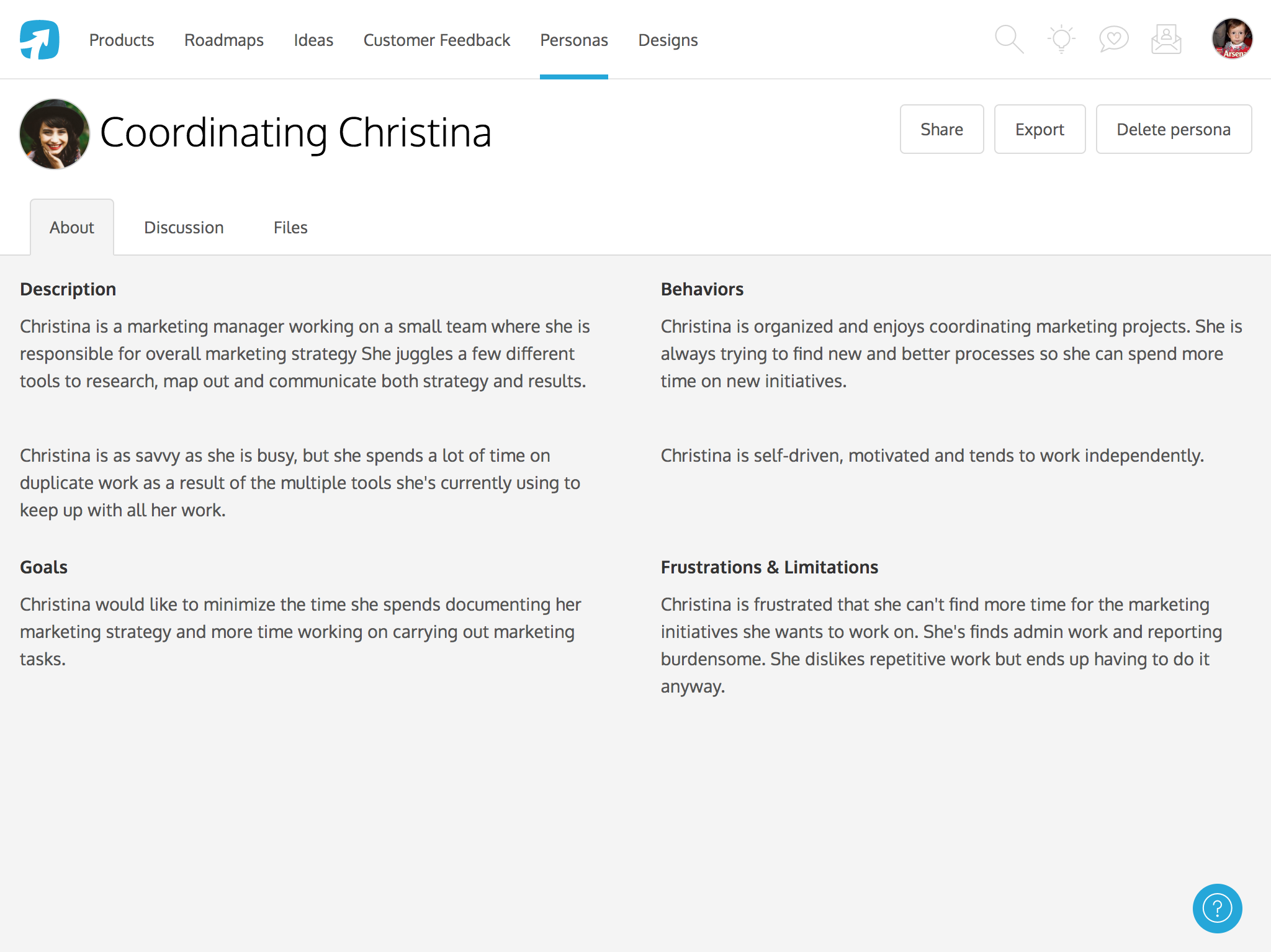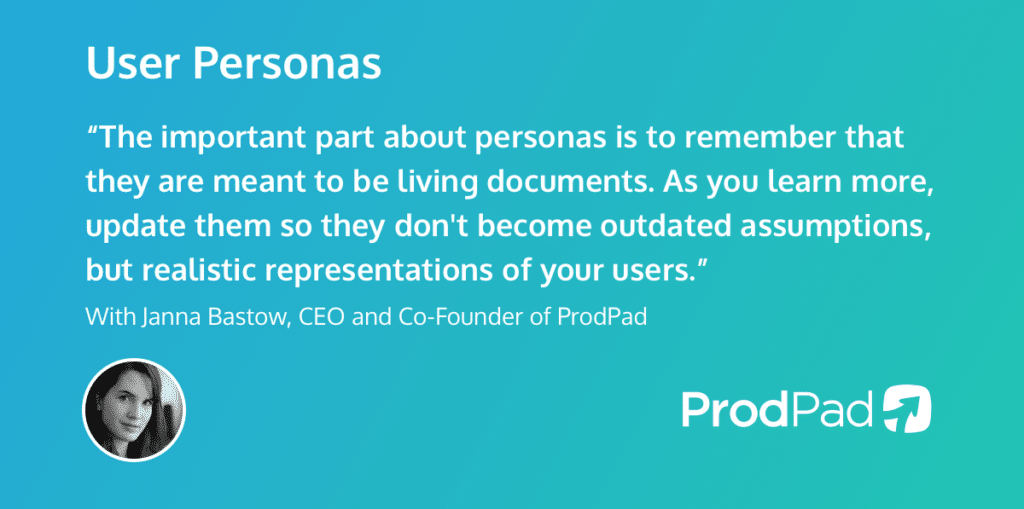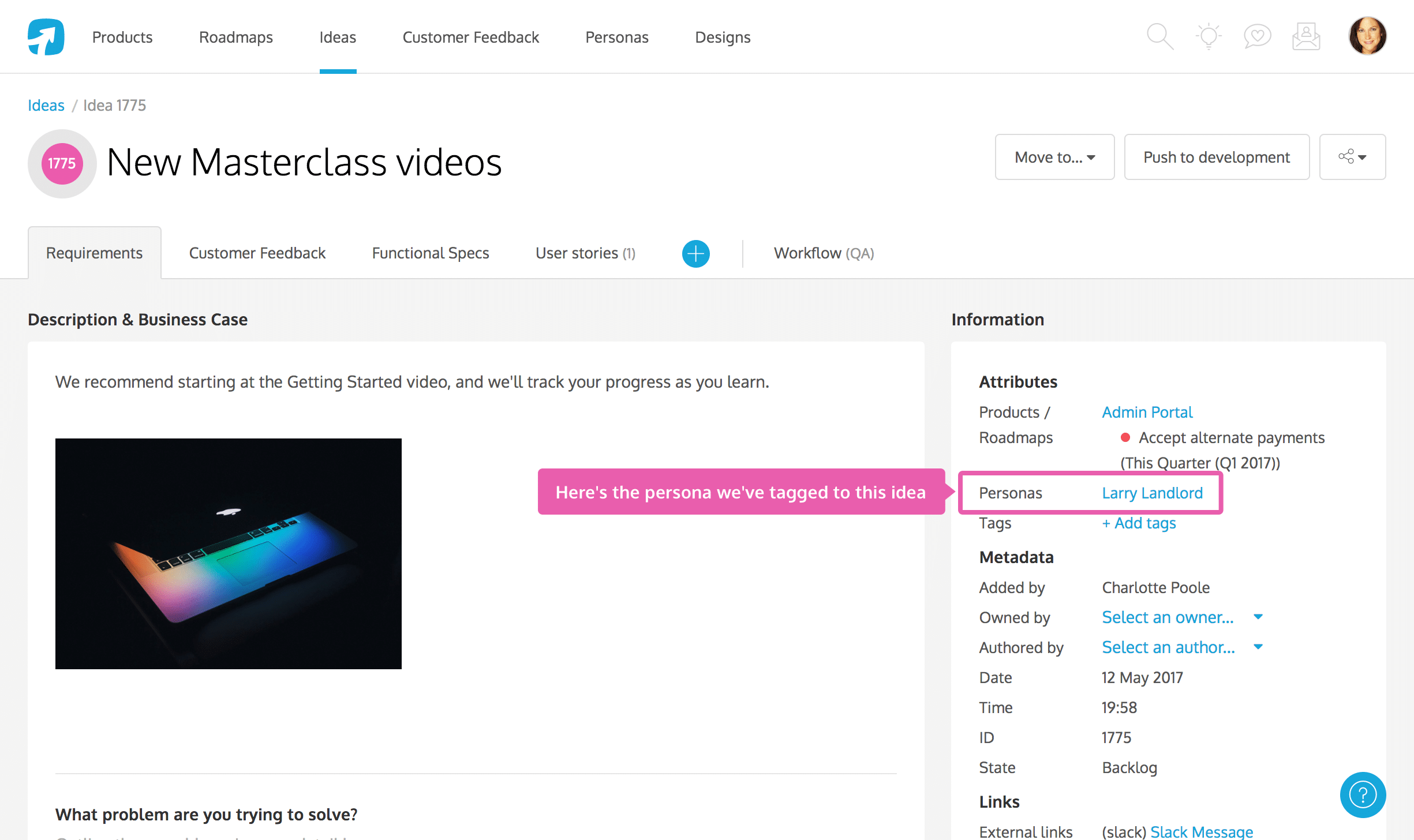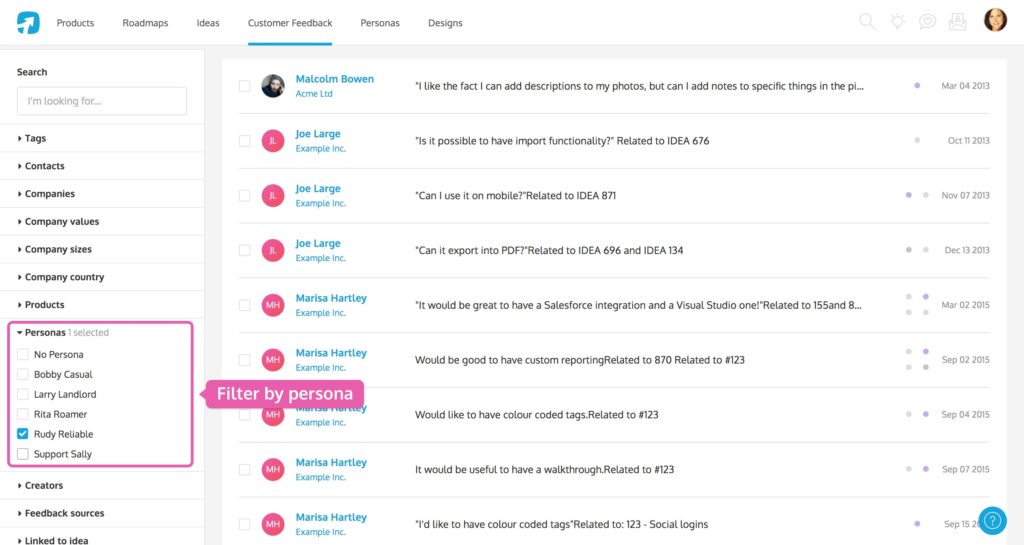How To Work With User Personas When You’re A Product Manager
Think about what it takes to run a successful services company, like an an agency or a consultancy. When you’re running an agency, you give them what they’re asking you for. They want a custom dashboard? You make it. They want you to make them a website? You do it. They want you to jump? You do it.
It’s all about making one customer happy.
But when you’re at a product company, you have exactly the opposite challenge: to build one product that scales across many users.
That means making tough decisions – and every product decision comes with an opportunity cost. Spend a week building a feature to bag one lucrative customer and leave a hundred others waiting? Work on expanding your free customer base or give VIP customers the functionality they want?
That’s why user personas matter for product managers. At a product company, you have to learn to weigh the needs of a segment more than the needs of an individual. That’s what it takes to build a product that scales.
User personas are your friend in all this. What individual users want and how they behave tends to cluster into visible patterns which you can use to build for growth.
What is a user persona?
User personas are a fictional representation of your users that help your teams understand who they’re building for.

A good user persona is realistic, easy to visualize, and tied into your day-to-day decisions and processes.
Each one is like a composite sketch of what you know about many individual customers, what jobs they want to get done and what problems they’re having along the way.
How to create a user persona
There are a ton of great resources online on building user personas. It’s up to you to decide how you want to approach it, depending on the time, data and resources you have on hand.
As you can see here, you can pull in a lot of different sources of input to help you define each persona. You don’t have to stick to any single “methodology” (there isn’t one).
Lean Personas (UXPin)
Not every company needs to build complex personas, says Jerry Cao of UXPin. This guide to lean personas from UXPin is super handy if you need to validate quickly to get your product out the door.
Data-Driven Personas (ConversionXL)
Want to put user persona development through a more rigorous process? This guide from ConversionXL shows you how to segment users based on data, survey results and includes both data analysis examples and advice from experienced marketers.
Marketing Personas (Buffer)
Buffer’s advice for developing marketing personas includes studying online traffic, including social media data, Google analytics and qualitative surveys.
Buyer Personas (Hubspot)
This guide from Hubspot includes a handful of ways to customize buyer personas for sales and marketing teams. It also includes the concept of a “negative persona” – a representation of who you don’t want as a customer.
Bonus: For a handy list of questions to ask during interviews, head to Usability.gov, which designs for not a couple thousand, or a couple million, but the entire population of the United Kingdom. They know a thing or two 😉
User personas help you be user-centric

I’ve seen many teams bring in pricey consultants to help develop user personas and then leave it in some obscure folder in Google Drive. Don’t let this happen to you! User personas help you be user-centric, if you put them to work.
Build a business case for product ideas
User personas can help you nail the business case for a product idea. Bringing in user personas allows you to ground those ideas within the bigger context of your business. What kind of users is this idea meant to help and how valuable does that make it?
A user persona gives you a centerpiece around which to focus your discussions. For example, you can see that the following idea is specifically meant to benefit “Larry Landlord.” Not just anyone.

That’s useful context as you validate the idea further and decide whether to move it forward in the workflow.
Understand what user personas need
There’s a really cool feature in ProdPad that you can use to pull up a list of customer feedback by user persona. This gives you an aggregate view of what your customers want from you, where they’re struggling, what kind of functionality they’d like, and so on.
This is monumentally important for product managers. Why? Because sorting through individual feedback gives you a limited perspective on what you think is important to customers. A handful of standout comments can pretty effectively cloud your judgment.
In contrast, reviewing a list of feedback by persona helps you make decisions that benefit an entire segment of users.

To learn more about how to do this, read about our Contact Profiles feature.
Communicate personas to your teams
User personas aren’t just for you and your product team to hang onto. They have really valuable context that everyone else working with you could use too!
If you’re throwing specs over to your development team, user personas give them the context they need to make judgment calls during build. Personas also help marketing teams understand their audience better so they can set up more effective messaging and targeting.
The key thing to remember is that the user personas you develop become the basic set of assumptions used across your business. Everyone else depends on you, the product manager, to keep their assumptions in check. If your persona evolves, you owe it to your business to update the persona so they can update their assumptions too.
So what’s next?
User personas should be relatable enough that they can be brought up all the time in daily conversations. But to help make them feel really real, you should bring them into product planning as soon as you can.
In ProdPad, you can develop product ideas with user personas, user stories and all the context you want.

One thought on "How To Work With User Personas When You’re A Product Manager"
Comments are closed.